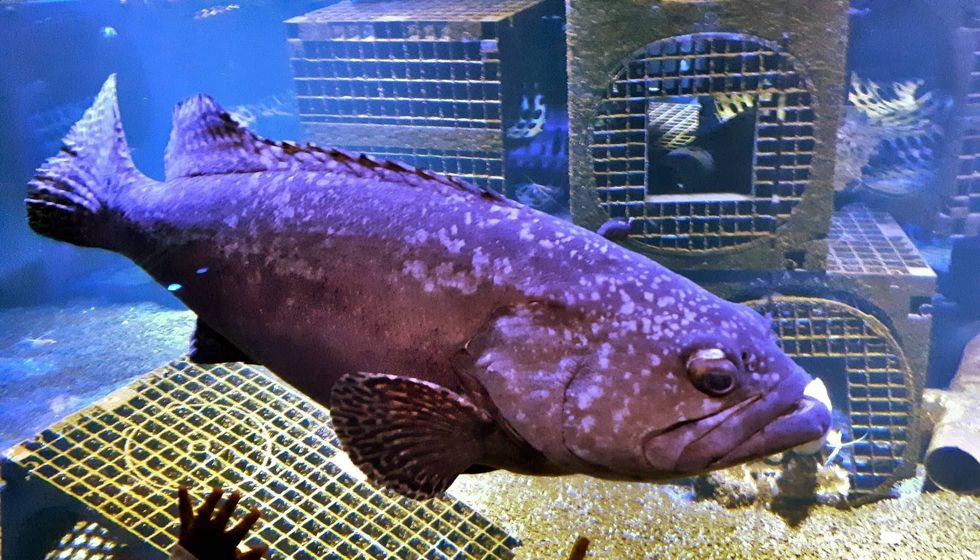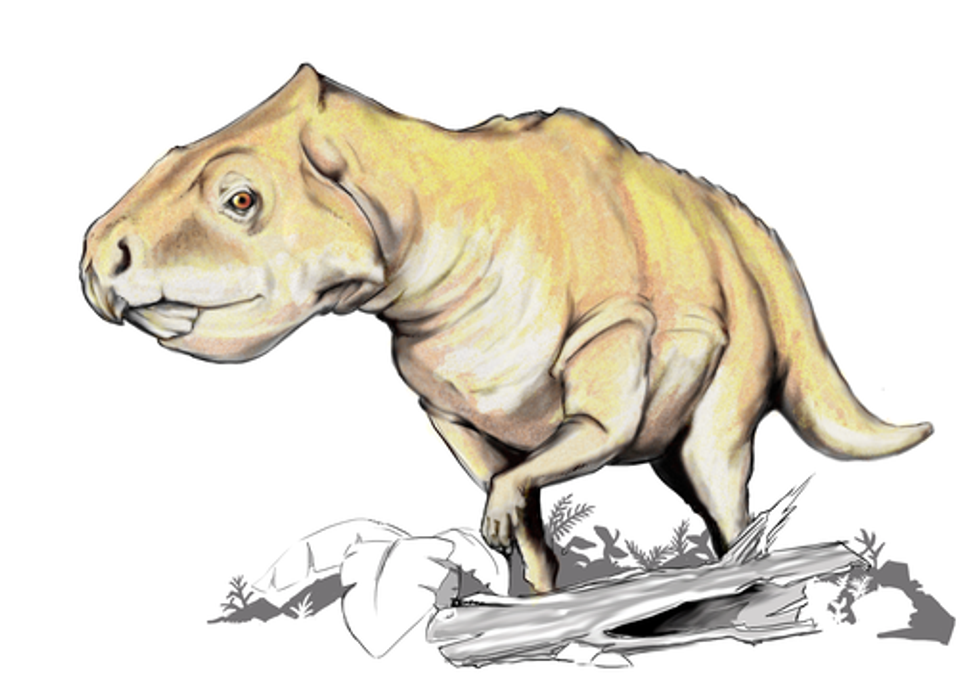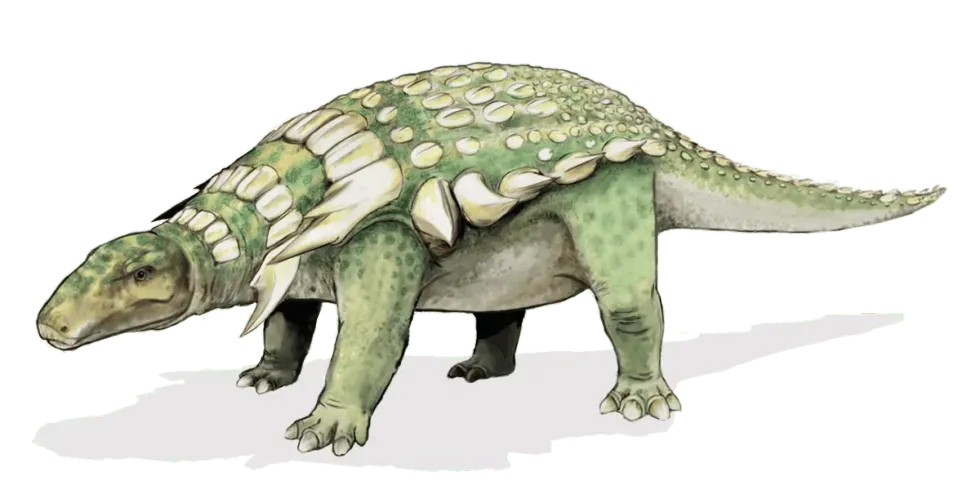Are you fascinated by grouper fish, like the red grouper? Then you'd like to read this guide on the dusky grouper.
The dusky grouper (Epinephelus marginatus) is a sturdy species of predatory fish with a large head, round eyes, and a protruding jaw. They are also known as yellowbelly grouper and yellowbelly rock cod fish.
The dusky grouper's largest size can reach more than 5 ft (1.5 m) in length. These fish have a dark and deep brown-colored body with even darker fins. They are protogynous hermaphrodites that undergo a sexual transformation where all females turn into males at around 10 years of age.
Even though the geographical range of the species remains scattered throughout the world, the largest population of the species is found in the Mediterranean Sea. Today, this marine animal has become a victim of overfishing, which is leading to a huge decline in its population.
Read on to know more about the dusky grouper, and if you like this article, check out these flounder and red grouper facts.
Dusky Grouper Interesting Facts
What type of animal is a dusky grouper?
The dusky grouper (Epinephelus marginatus) is a species of fish.
What class of animal does a dusky grouper belong to?
The dusky grouper belongs to the class Actinopterygii.
How many dusky groupers are there in the world?
The population of the dusky grouper or yellowbelly grouper in exact numbers is not known. The geographical distribution of this species is scattered across the east and the southeast Atlantic Ocean, the western Indian Ocean, and the western Atlantic Ocean.
Although we can make rough estimates of the dusky grouper population in a particular region through an underwater survey, it's pretty difficult to assess their actual numbers across the world.
Where does a dusky grouper live?
Dusky groupers can mainly be seen in four places: the southwestern Atlantic Ocean, the southeastern Atlantic or West Africa, the northeastern Atlantic, the Mediterranean Sea, and the western Indian Ocean. However, stray fish belonging to this species have also been found in many places, like Argentina, the eastern English Channel, Uruguay, the British Isles, and southeastern Brazil.
What is a dusky grouper's habitat?
Dusky groupers (Epinephelus marginatus) only inhabit rocky marine areas where there's an abundance of caves and holes. These fish are present in a depth of water up to 984.3 ft (300 m). Usually, most of them can be found at a depth up to 164 ft (50 m).
Who does the dusky grouper live with?
This marine species is solitary in nature. Each grouper has its own territory and is known to stay immobile there for long periods of time. They come together in small clusters only during the breeding season.
How long does a dusky grouper live?
Dusky groupers have a long lifespan. Fish of this species can live for a range of 40-50 years in their natural habitat.
How do they reproduce?
This species is hermaphrodite in nature. All fish are born female and then turn into males when they get old. When it comes to sexual maturity, dusky groupers become sexually mature at around five years of age, and most fish turn into males around the age of 9-16 years old.
The breeding season is around summer. During this time, groups of 10 or fewer fish can be found scattered here and there. Due to a lack of research, the reproductive behavior and their manner of parental care remain unknown.
What is their conservation status?
The conservation status of the dusky grouper species, according to the International Union for Conservation of Nature, is listed as Vulnerable. They have become victims of extensive fishing activities, and hence, their population is showing a decreasing trend.
The grouper species is quite popular as food fish in many parts of the world, and they easily become victims to commercial fishing. However, many conservation actions have been taken up to revive their numbers. Such conservation plans and fishing restrictions can help improve their population significantly.
Dusky Grouper Fun Facts
What does a dusky grouper look like?
Dusky groupers (Epinephelus marginatus) are large fish. They have a sturdy and large body with a large head, mouth, and two round eyes. The lower lip of the fish sticks out further than the upper lip.
They have small yet strong, cone-shaped teeth. They have an overall dark brown-colored body with darker fins and a lighter belly color.
Edges of their anal, caudal, and pectoral fins have a white border. While tips of pelvic fins are black in color, pectoral fins are reddish-brown or gray. The body is marked with yellow and white spots all over along the length.
How cute are they?
Not everyone will find yellowbelly groupers cute, but they are surely fascinating. They have a sedentary personality and are rarely aggressive.
How do they communicate?
Fish, in general, communicate visually by vibrations and sounds. They use sounds and visual cues to locate and hunt their prey. They can sense vibrations in the water around them by their lateral line, which gives them a good idea of their surroundings.
How big is a dusky grouper?
An adult dusky grouper is about 3.3-4.9 ft (1-1.5 m) in length. They are about half the length of a giant grouper, which is about 8 ft (2.4 m) in length.
How fast can a dusky grouper swim?
This species of fish lives a sedentary life hiding in rock crevices and pools. Though they don't swim a lot, when they do, they usually swim at a moderate pace.
How much does a dusky grouper weigh?
The weight of an adult dusky grouper can go above 110.2 lb (50 kg).
What are the male and female names of the species?
Males and females of the species don't have any specific names.
What would you call a baby dusky grouper?
A baby dusky grouper is known as fry.
What do they eat?
Dusky groupers are carnivorous in nature. They mainly feed on crustaceans, like crabs and shrimps, and cephalopods like squids and octopuses. Apart from this, they also feed on various smaller fish.
Are they aggressive?
This species is not known to be dangerous or aggressive by nature. To date, there's no record of any humans being harmed by these fishes.
Would they make a good pet?
Dusky grouper fish require a specific environment and habitat to live and thrive. It would not be wise to extract them from their natural habitat.
Did you know...
Dusky grouper or yellowbelly grouper (Epinephelus marginatus) fishes can live up to 50 years. Also, the presence of large female dusky groupers indicates that maybe not all fish of the grouper species change sex upon reaching maturity.
Naming the dusky grouper
The name of their genus Epinephelus comes from the Greek word 'epinefelos,' which means 'cloudy.' Groupers get this name probably due to spotted patterns on their body. Dusky groupers got their first name probably from their dark body color. Some other common names of the species are yellowbelly grouper or yellowbelly rock cod.
How many types of grouper fish are there?
About 159 grouper species can be found around the world. All grouper species belong to the family Serranidae, along with other fishes such as sea basses and anthias. However, sea basses and anthias belong to a separate subfamily from other grouper species, who belong to the subfamily Epinephelinae.
Here at Kidadl, we have carefully created lots of interesting family-friendly animal facts for everyone to discover! Learn more about some other fish from our brown trout facts and pumpkinseed sunfish facts pages.
You can even occupy yourself at home by coloring in one of our free printable fishing coloring pages.









